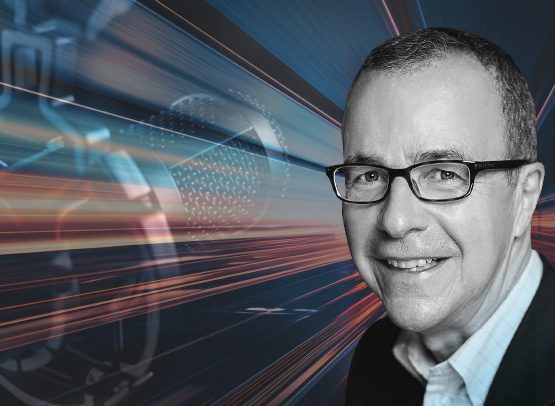As regions across the US and Canada emerge from the pandemic, The Future of Work has become one of the hottest topics of conversation.
In her role as CHRO and Head of People & Culture for BMO Financial Group, one of the ten largest banks in North America, Mona Malone has been living in the future for years.
For two decades, the financial industry has been propelled by seemingly contradictory forces. On one side, the complete digitization of work. On the other, rising customer and employee expectations of experience and meaningful connection. At the same time, society at large has been contending with huge shifts in demographics, issues of diversity, equity and inclusion, and new expectations of work and life balance.
And through that, Mona and her team have been anticipating and building the systems that enable the workforce and the culture of BMO to transform so they may thrive in this always-arriving tomorrow.
Recently, I had the chance to chat with Mona and Livewire’s president, Mark Attard, to discuss the challenges and human priorities in the Future of Work.
Disruption is opportunity
Right away, Mona sees possibility: “any kind of large dislocation like the pandemic is an opportunity for innovation. And some use the expression ‘building back better,’ but it’s really not about going back to what we were used to doing but coming to something that is right for the new context.”
Disruption requires that leaders act to meet the needs of the moment. There are those who believe that a rapidly changing environment favors smaller companies who can tack quickly with the tides. With a global workforce of 43,000 and just over 200 years of history, BMO’s size and complexity might imply huge organizational inertia. But as a strongly purpose-driven organization, leaders at BMO can act with the alignment it creates across the company and focus their considerable resources to seize the opportunity to rebuild in ways that better serve customers, employees, and communities.
“The way that we're approaching this is by developing enterprise principles that shape the employee experience (EX), irrespective of what group you're in or the type of work you do, and then creating some freedom within that frame that workgroups can play within.”
Her team has concentrated on building out personas for the many types of work done at the bank, ensuring there is a sense of a commonality in the employee experience.
“It’s important to us that we have a sense of shared culture across the organization – how it plays out exactly is very different in a contact center or in a back-office team versus on the trading floor, but there are some elements that are common.”
Mona is focused on using this moment to advance BMO’s EX and performance and launches in to explain the foundations of her approach.
“Firstly, it’s about mental health and well-being. There is a clear business case, both from the perspective of the productivity of the workforce, but also in terms of us following our purpose:” to grow the good in business and life.
And it directly connects to her second theme. “We've created a principle that embraces new ways of working for diversity, equity, and inclusivity. And it's one of the top perspectives that's shaping our work.”
“We're tracking and conscious of EX by segment of our workforce,” and are thinking about conditions or barriers that keep people from being able to fully pursue their careers. She gives the example of a change made in all global markets and investment and corporate banking where, if someone takes a parental or medical leave, they get their book of clients back when they return. It’s about equity: “If people have to start redeveloping their books … that marginalizes and reduces their opportunity for advancement.”
Of course, the pandemic upended more than people’s client books. It upended the regular patterns of life and the supports people relied upon – childcare, home care, schools, care for seniors. BMO embraced flexibility in these areas too, helping their team members manage the shockwaves wherever they could.
For her third point, Mona stresses the importance of coming together in the workplace but embracing flexibility and a hybrid model. “For us, the office isn't dead. It is a core part of our future work environment,” critical to fostering a network of relationships that promote innovation and collaboration. BMO is taking a purposeful approach to how they work, being deliberate about how they create connection and office spaces that ensure people can work together, not just beside one another.
She closes out talking about the big pieces of the plan with talent strategies, emphasizing how hybrid work creates opportunities to think more laterally. “For example, in places where it is hard to hire people for certain roles, we can be more creative in filling those roles by opening up job opportunities in a broader geography.”
“That’s true,” Mona agrees, “but not all knowledge-based work will move in that direction. There are still many jobs that are location-based and can’t be virtual in the same way as a contact center role.”
Mark has been listening to us as we get into it and adds, “there's another side to that though because, once you open up, it also means that your candidates have more choice as well.”
“Right,” Mark nods. “And in thinking about broadening your reach geographically, you also open other time zones as well. Hybrid not only starts to give employees more options in where they work, but when they work.”
Mona explains that flexibility in time of work will still be heavily dictated by the nature of the role: some are tied to a location that is open at specific times, others need to answer responses quickly and consistently. Flexibility is important in terms of scheduling, but still must be pre-planned.
Telling the story of opportunity
Mark leans in. “A key part of communicating any change or transformation is thinking about how you will get people aligned and how you need people to think, feel, and act to achieve your objectives. In our work, we want to establish a narrative that connects them from where they are today to that future place. It’s the story of the opportunity that lives on the other side of change, and it answers the big 'why' questions – what makes this journey worthwhile? What would be the key elements in BMO’s narrative?”
Mark adds “it becomes an equalizer for some situations, it puts people on a more level playing field.”
“It’s critical that we have a shared belief, that we're anchored in a purposeful approach to how we do our work, so it's not a free for all.” She asserts that “there's an enormous opportunity for hybrid to advance inclusion.”
“Right. And thinking about our culture in terms of being aligned with our values and purpose, supporting a high-performance business environment: what is the employee experience that allows that to happen, where you're focused on individual productivity, team productivity, but in a way that is well aligned with your purpose and values?”
Mona describes the importance of the sense of safety in the workplace – physical safety as it relates to the pandemic but expanding to include the mental health and psychological safety benefits that help individuals and teams deliver. “People need clarity on the expectations of their roles and to understand how they ladder up to advancing BMO’s strategies.”
She continues to note that the narrative for success in the new ways of working at BMO would include a focus on learning and development, growing people’s skills not only for their current role, but for the future as well. The Bank also wants to ensure there is trust between leaders and team members as it is within those relationships that you have candid, constructive conversations and that everyone feels heard, appreciated, and recognized for the work that they're doing.
“Building on that,” I say, “Mona, how do you think about the relationship between HR and internal communication when it comes to transformational change like The Future of Work?”
“I think the partnership between internal communications and so many functions, HR being just one of them, is critical to any effective transformation. Transformation is about moving people from point A to point B. Communication allows you to set a shared view of strategic direction. It allows you to bring what it actually means to life for people, and to very clearly articulate the components and what the journey looks like.”
“Right! Employees need to feel like the change is happening with them. They need the information, of course, but they also need the inspiration and to understand where everyone is moving towards to really be part of making it happen.”
Learning and adapting to lead
A thought occurs and I take us in a new direction. “Now, leaders play an important role in modeling behaviors for their teams, but one of the things that has really become apparent for us in our work with other organizations is that this change can be challenging for leaders too. Many have gained success from working in a certain way, and their view of how productivity is delivered may be different from the generation coming up through the ranks, and they may be struggling with the notion of hybrid.”
“I think we're all struggling,” she says. “You know, any move to a new way of doing things or a new skill, you struggle at first. It's learning through it that allows you to get to a higher performance level. My advice to managers would be to start with the mindset of empowerment and trusting employees. Be very clear about what the outcomes are that you're looking for, and give candid feedback, positive and negative, about what's working.”
“And to help themselves and their teams, leaders need to be thinking about new ways they can be visible in a hybrid world,” adds Mark. “While it's not going to completely go away, they won’t have the same ‘hallway interactions.’ That kind of physical presence inside the office becomes more limited. Senior leaders are going to need to embrace digital in a way many haven’t yet, to become a lot more active and value their time spent interacting with people across the organization through some of those lateral communication channels. Mona, you’ve been on a journey of transformation for a number of years. I think in the last 12-15 months, everybody has really seen firsthand that technology has been a real positive enabler and accelerator for things. Do you think this will make technology change a bit easier going forward?”
“Absolutely,” she agrees, confident in the future. “I think our lived experience sets the context for how we think about things. And what we’ve seen is all that became possible through resilience and innovation. I think it would be a real loss if that didn't pay forward in the next few years. And I think, when you look at the growth that's expected in North America combined with the potential to learn from what we've just gone through, I think it will be a really exciting time.”







